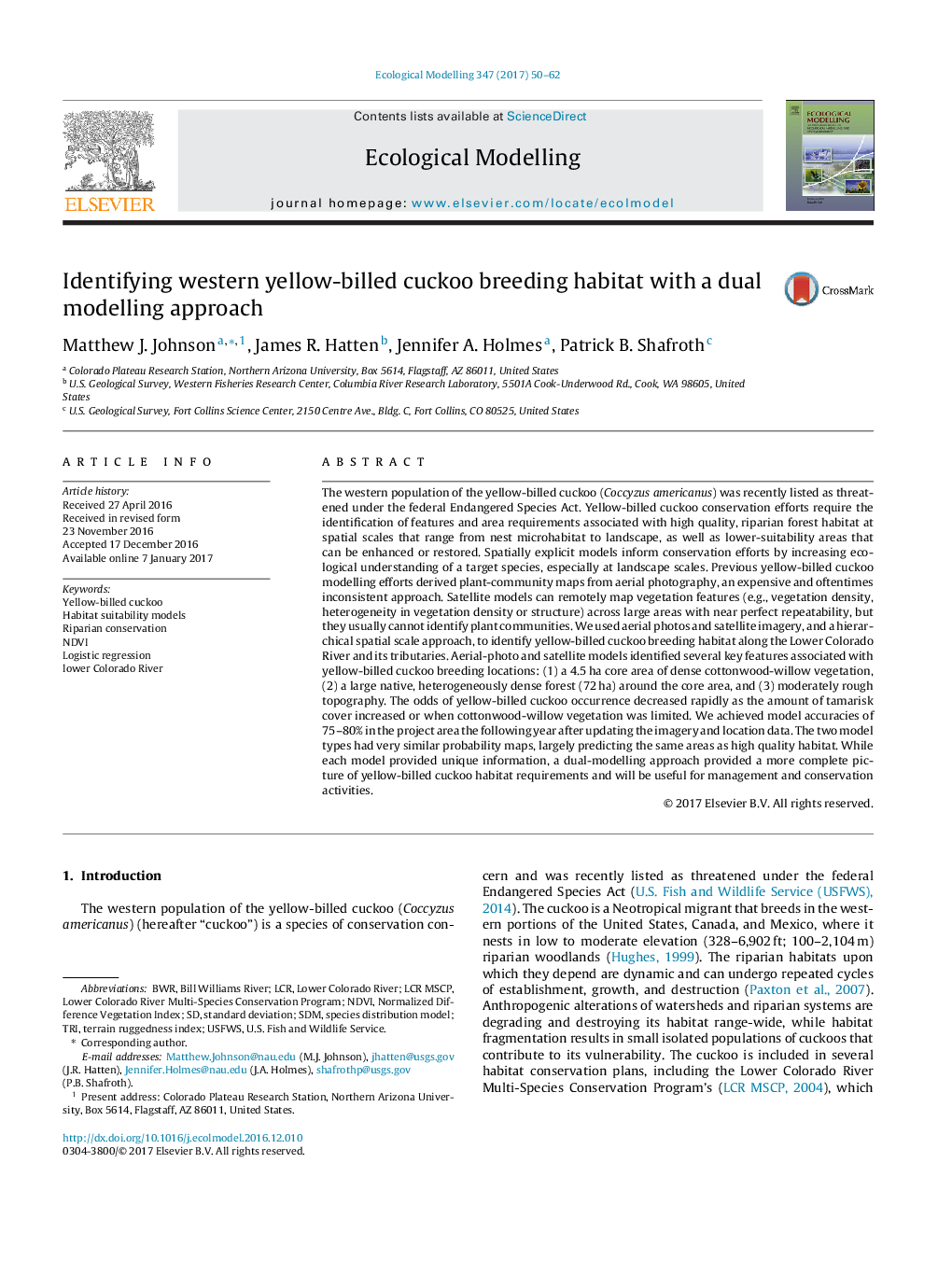| کد مقاله | کد نشریه | سال انتشار | مقاله انگلیسی | نسخه تمام متن |
|---|---|---|---|---|
| 5742332 | 1617400 | 2017 | 13 صفحه PDF | دانلود رایگان |
- We modeled yellow-billed cuckoo habitat with aerial- and satellite-based models.
- A dense cottonwood-willow core area and a large adjoining native forest were key.
- Habitat quality declined as amount of tamarisk vegetation increased within a patch.
- A dual-modelling approach provided a more complete picture of habitat requirements.
- The satellite-based approach is easy to project but doesn't give plant-specific data.
The western population of the yellow-billed cuckoo (Coccyzus americanus) was recently listed as threatened under the federal Endangered Species Act. Yellow-billed cuckoo conservation efforts require the identification of features and area requirements associated with high quality, riparian forest habitat at spatial scales that range from nest microhabitat to landscape, as well as lower-suitability areas that can be enhanced or restored. Spatially explicit models inform conservation efforts by increasing ecological understanding of a target species, especially at landscape scales. Previous yellow-billed cuckoo modelling efforts derived plant-community maps from aerial photography, an expensive and oftentimes inconsistent approach. Satellite models can remotely map vegetation features (e.g., vegetation density, heterogeneity in vegetation density or structure) across large areas with near perfect repeatability, but they usually cannot identify plant communities. We used aerial photos and satellite imagery, and a hierarchical spatial scale approach, to identify yellow-billed cuckoo breeding habitat along the Lower Colorado River and its tributaries. Aerial-photo and satellite models identified several key features associated with yellow-billed cuckoo breeding locations: (1) a 4.5Â ha core area of dense cottonwood-willow vegetation, (2) a large native, heterogeneously dense forest (72Â ha) around the core area, and (3) moderately rough topography. The odds of yellow-billed cuckoo occurrence decreased rapidly as the amount of tamarisk cover increased or when cottonwood-willow vegetation was limited. We achieved model accuracies of 75-80% in the project area the following year after updating the imagery and location data. The two model types had very similar probability maps, largely predicting the same areas as high quality habitat. While each model provided unique information, a dual-modelling approach provided a more complete picture of yellow-billed cuckoo habitat requirements and will be useful for management and conservation activities.
Journal: Ecological Modelling - Volume 347, 10 March 2017, Pages 50-62
